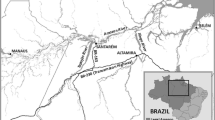Abstract
This study tested three hypotheses concerning the differential association of social and economic factors with locational in- and outmobility. The results suggest that inmobility is predominantly affected by the economic milieu of towns, while outmobility is predominantly influenced by extant social conditions. A multivariate examination of locational outmobility identified high divorce rate, distance from a major city and large family size as significantly explaining 45.8% of the outmobility variance. Similar analysis of locational inmobility identified the unemployment rate and the ethnic composition as the variables signiciantly explaining 73.9% of the inmobility variance. The results, which were congruent to the first two hypotheses submitted, were discussed and interpreted. The hypothesis concerning the relationship between in- and outmobility was not confirmed. Within successful locations no significant, positive correlation between in- and outmobility rates was obtained, while among unsuccessful locations positive, significant correlations were obtained.
Similar content being viewed by others
References
Central Bureau of Statistics: 1984, Statistical Abstract of Israel, vol. 35, Jerusalem.
Clark, W. A. V.: 1986, ‘Human migration’, Vol. 7, in G. I. Thrall (ed.), Scientific Geography Series (Sage Publications, Beverly Hills).
Comay, Y. and A. Kirschenbaum: 1973, ‘The Israeli new town: An experiment in population redistribution’, Economic Development and Cultural Change 22, pp. 124–134.
Eaglstein, A. S. and J. Weisberg: 1989, ‘Categorical multivariate analysis of urban emigration’, Monograph Series #47 (Ministry of Labor and Social Affairs, Jerusalem).
Eaglstein, A. S. and J. Weisberg: 1990, ‘Categorical, multivariate analysis of intra-urban migration’, Urban Studies 27, pp. 509–517.
Gleave, D. and M. Cordey-Hayes: 1977, ‘Migration dynamics and labor market turnover’, Vol. 8, Part 1, in D. Diamond and J. P. McLoughlin (eds.), Progress in Planning (Pergammon Press, Oxford).
Lansing, J. B. and Miller: 1967, The Geographical Mobility of Labor (Survey Research Center, University of Michigan, Ann Arbor).
Ministry of Education and Culture: 1985, Schools in Local Authorities, School Year 1983/4, Jerusalem.
Ministry of Labor and Social Affairs: 1985, Minors in the Care of the Juvenile Parole Service, Jerusalem.
Rossi, P. H.: 1955, Why Families Move (The Free Press, Glencoe).
Weisberg, J. and A. S. Eaglstein: 1988, ‘An analytical paradigm for the analysis of national inmigration patterns’, International Migration 26, pp. 253–266.
Author information
Authors and Affiliations
Rights and permissions
About this article
Cite this article
Weisberg, J., Eaglstein, A.S. Differential components of urban in-and outmobility. Soc Indic Res 38, 217–228 (1996). https://doi.org/10.1007/BF00292046
Accepted:
Issue Date:
DOI: https://doi.org/10.1007/BF00292046




